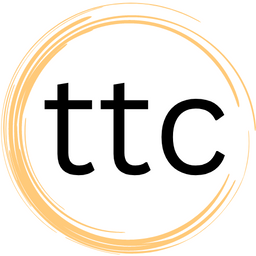My 5 Rules as a Tech Professional— and Why They Might Work for You Too
If you adopt these rules in your professional life, you’re bound to see a significant boost in your productivity and results — while also enjoying a calmer, more peaceful mind. They’ve worked effectively for me and should work for you as well.

Being a tech professional while juggling multiple responsibilities can feel hectic — and even a little scary at times. As someone who’s been in the tech field for years, I completely understand what this feels like. Fortunately, there are many frameworks and rules out there to make our lives easier. Unfortunately, though, there are so many that choosing the right ones can be quite a daunting task in itself.
I myself have been part of this confusing journey, and over the years, I’ve stuck to a few rules that have proven hugely productive for me. So, here they are for you. If you adopt these rules in your professional life, you’re bound to see a significant boost in your productivity and results — while also enjoying a calmer, more peaceful mind. They’ve worked effectively for me and should work for you as well.
Eat the Frog
This is a widely followed rule among professionals. Interestingly, I’ve been following this for a long time without realizing that it’s actually a well-established rule in the industry. This rule says - When you start your workday, choose tasks that are challenging, boring, irritating, or anything you’d prefer to get out of the way as soon as possible. This could be anything from data investigation, responding to emails, to a Teams call or documentation work. Once you tackle these tasks first thing when your shift starts, you’ll not only feel calmer and more confident, but you'll also set a positive tone for the rest of your day. You'll then be able to focus on other tasks, leading to better productivity.
Choose the tasks you don’t enjoy and get them out of the way quickly — that’s the idea!
Frontload the Noise
Calls, meetings, discussions, status updates, stand-ups… the list goes on. As you’ve likely realized through your work experience, these activities are nothing but noise that gets in the way of your actual core work. These activities don’t produce any quantifiable results or outcomes. They simply exist, waiting to be done — like a ritual we all silently follow. So, the rule is simple — anything you believe is a distraction from your core work should be scheduled in the first half of your shift.
Got a call with a team member about anything? Put it in the first half.
Meeting with a stakeholder or another team? First half.
Status update meetings? First half.
If someone sends you a meeting invite for the second half, politely ask if it can be moved to the first half.
The idea is to keep the first half of your shift for noisy work, so the second half stays clear for what truly matters.
I understand that many times it’s not possible to align all this work in the first half. However, once you sincerely make an effort, you’ll be amazed to see how easily it can be done. You might be wondering — what’s the benefit?
When you finish your work shift, your mind — consciously or unconsciously — tends to replay the work you’ve done throughout the day. Have you ever wrapped up your workday feeling genuinely content, confident, and quietly proud? That’s your mind replaying the day’s moments. And when those moments are productive, you don’t just finish a shift — you walk away with a sense of achievement that energizes you long after the day is done.
By frontloading the noisy tasks in the first half and focusing on meaningful work in the second, your mind will replay your most recent achievements as you leave the office. Since those achievements are your productive wins, the feeling of accomplishment and confidence grows exponentially. This isn’t just about finishing work — it’s about leaving with a sense of real achievement, and that feeling is pure magic. Trust me, once you start experiencing those moments of real productivity, you won’t want to go back. Keep it up, and you’ll notice a calmer mind, boosted confidence, and far less anxiety — all of which will positively impact your career and personal growth.
The WWH Framework
The minds of tech professionals are wired to immediately start thinking of solutions. When someone presents a problem or requirement, tech professionals immediately reach into their mental arsenal and start thinking about how to implement it. And this is exactly where the problem begins.
Imagine a user of the application you manage requests a new feature to be added. You listen to the request, and you or your team start working on it. Midway through, you start encountering situations where a lot of clarity is needed. You then go back to the user, discuss the details, gain clarity, and resume the work. This cycle is a normal part of a tech professional’s life, and honestly, it can’t be completely avoided. It’s a part of every requirement implementation process. The problem arises when this cycle occurs too frequently. If it repeats often, it delays progress, frustrates both the user and the team, and ultimately results in lower productivity and outcomes.
Enter the WWH framework — What, Why, and How — to address this challenge.
I diligently use the above framework whenever I’m provided with any set of requirements or issues. Here’s how it’s followed:
First, always try to understand WHAT exactly the requirement is. Whenever the requirements are laid out to you, refrain from immediately thinking about how to resolve them. Avoid thinking about it right away. Just focus on understanding: What is the requirement? Is my understanding of it aligned with what the user is trying to communicate? Are we in sync? You must keep asking yourself these questions until you’re confident that you fully understand the requirement. Focus SOLELY on the ASK, NOT the solution.
Once you’ve fully grasped what needs to be achieved, shift your focus to WHY it needs to be done. Make sure to fully understand WHY the requirement is necessary. What’s the underlying benefit of this requirement? Why is it exactly needed? Is it truly worth implementing? What benefits will the business or user gain if this requirement or feature is incorporated? Keep asking these questions until you get clear answers and ensure that you and the user/business are in sync. Focus ONLY on the REASON, NOT the solution.
The last piece of the puzzle, understandably, is HOW. This is the simplest part for tech professionals. Shift your focus to how you can implement the solution. However, the key is that you must not focus on HOW until you have absolute clarity on WHAT and WHY.
The framework may seem easy at first glance, but it's not always easy to follow. Our minds often want to jump straight to the third piece, HOW, and this is where a lot of practice is required. You need to train your mind to stay focused on the first two pieces. Once you start following this practice, you’ll gain much more clarity as a tech professional moving forward. Whether you work on the task or your team does, you’ll spend much less time going back to the business for clarifications. You’ll emerge as a more confident leader for your team and a more dependable resource for the business. Give it a try—you won’t regret it!
Protect the Friday
This carries a tone somewhat similar to the 'Frontload the Noise' rule. In 'Frontload the Noise,' you protect your second half, and in 'Protect the Friday,' you protect your Fridays. As simple as that. But what’s the real benefit? The benefit is the same. When you avoid meetings and calls on your Fridays, dedicating yourself only to meaningful, productive work, you’ll experience a surge of confidence and a deep sense of accomplishment. This feeling will carry over throughout your whole weekend, and you’ll start your Monday with strong, uplifting energy and a can-do attitude. Embrace this rule, and watch how it transforms not just your Fridays, but your entire approach to the week ahead.
Don’t Trust Your Brain
Always note things down and plan your day ahead. I know you’ve heard this advice many times before, but you won’t truly understand how powerful and productive this practice is until you start using it.
Need to schedule a meeting with a team lead from another team? Note it down.
Need to ask some queries from stakeholders? Note it down.
Have to complete certain documentation by next week? Note it down.
Don’t assume you’ll remember these things. Your brain has lots of other important things to execute. Don’t use it just for remembering tasks. Outsource it. You can jot it down on simple sticky notes or use a productivity tool. Personally, I prefer productivity tools, and I use Todoist. You can use anything, but the point is that any important task or activity you need to remember should not be stored in your mind. Instead, offload this responsibility to sticky notes, a simple piece of paper, or any productivity tool. I can’t stress enough how powerful this exercise is. Just start using it and watch productive days unfold before you.
Find me on https://www.linkedin.com/in/gaurav-sharma-unfiltered

